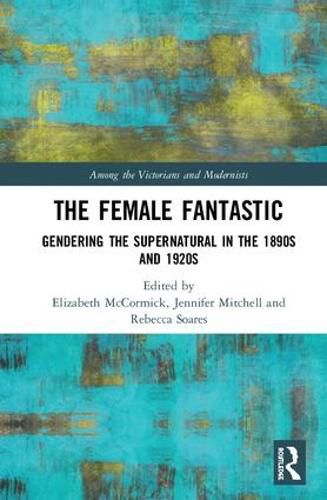Readings Newsletter
Become a Readings Member to make your shopping experience even easier.
Sign in or sign up for free!
You’re not far away from qualifying for FREE standard shipping within Australia
You’ve qualified for FREE standard shipping within Australia
The cart is loading…






For women-identified writers of both eras, the fantastic offered double vision. Not only did the genre offer strategic cover for challenging the status quo, but also a heuristic mechanism for teasing out the gendered psyche’s links to creative, personal, and erotic agency. These dynamic presentations of female and gender-queer subjectivity, are linked in intriguing and complex matrices to key moments in gender(ed) history.
This volume contains essays from international scholars covering a wide range of topics, including werewolves, mummies, fairies, demons, time travel, ghosts, haunted spaces and objects, race, gender, queerness, monstrosity, madness, incest, empire, medicine, and science. By interrogating two non-consecutive decades, we seek to uncover the inter-relationships among fantastic literature, feminism, and modern identity and culture. Indeed, while this book considers the relationship between the 1890s and 1920s, it is more an examination of women’s modernism in light of gendered literary production during the fin-de-siecle than the reverse.
$9.00 standard shipping within Australia
FREE standard shipping within Australia for orders over $100.00
Express & International shipping calculated at checkout
For women-identified writers of both eras, the fantastic offered double vision. Not only did the genre offer strategic cover for challenging the status quo, but also a heuristic mechanism for teasing out the gendered psyche’s links to creative, personal, and erotic agency. These dynamic presentations of female and gender-queer subjectivity, are linked in intriguing and complex matrices to key moments in gender(ed) history.
This volume contains essays from international scholars covering a wide range of topics, including werewolves, mummies, fairies, demons, time travel, ghosts, haunted spaces and objects, race, gender, queerness, monstrosity, madness, incest, empire, medicine, and science. By interrogating two non-consecutive decades, we seek to uncover the inter-relationships among fantastic literature, feminism, and modern identity and culture. Indeed, while this book considers the relationship between the 1890s and 1920s, it is more an examination of women’s modernism in light of gendered literary production during the fin-de-siecle than the reverse.